
Decades before Israel’s establishment, clandestine Jewish paramilitaries were active in British Mandate Palestine, defending the Jewish community and working toward the founding of a Jewish state.
While their main adversaries were the British police and Arab forces, there were also significant internal tensions driven by the distinct ideological differences between the three main groups: the Haganah, Irgun, and Lehi.
Ultimately, these three groups set aside their differences and unified, forming the IDF (Israeli Defense Forces). Let’s unpack the three pre-IDF brigades of the War of Independence and their distinct, often clashing ideologies.
The War of Independence
First, let’s set the stage with the historical context. In 1920, following the collapse of the Ottoman Empire, the British took control of vast territories in the Levant, including what is today the state of Israel.
The British policies were not favorable toward the Jews in the Middle East, notably restricting Jewish immigration. Although the Jewish community’s consensus was initially pacifistic, leaders recognized they’d have to fight for their survival and autonomy given the British and Arab hostilities.
As a result, the underground paramilitaries operated with extreme caution, knowing that discovery often led to capital punishment. Many recruits were young, some still in their teens, and they had to conduct their operations under a veil of secrecy to elude capture.
On May 14, 1948, the day before the British were set to withdraw, Israel declared its statehood in line with the 1947 U.N. Partition Plan. The very next day, an alliance of Arab nations — Jordan, Syria, Lebanon, Egypt, Saudi Arabia, and Iraq — converged to destroy the new Jewish state, refusing to recognize Israel’s existence.
The Jewish paramilitaries put aside their differences to defend the fledgling Jewish state. Ashkenazi, Sephardi and Mizrahi Jews came together along with their Druze, Bedouin and Circassian allies to fight. The wider Jewish diaspora — including foreign volunteers — rallied to the cause with financial and moral support.
With their combined expertise and training, they rose to meet this challenge and, against all odds, emerged victorious, securing the establishment and survival of the Jewish state of Israel.
The unity forged during the War of Independence laid the foundation for the IDF, a symbol of national strength and resilience that endures to this day.
The Haganah
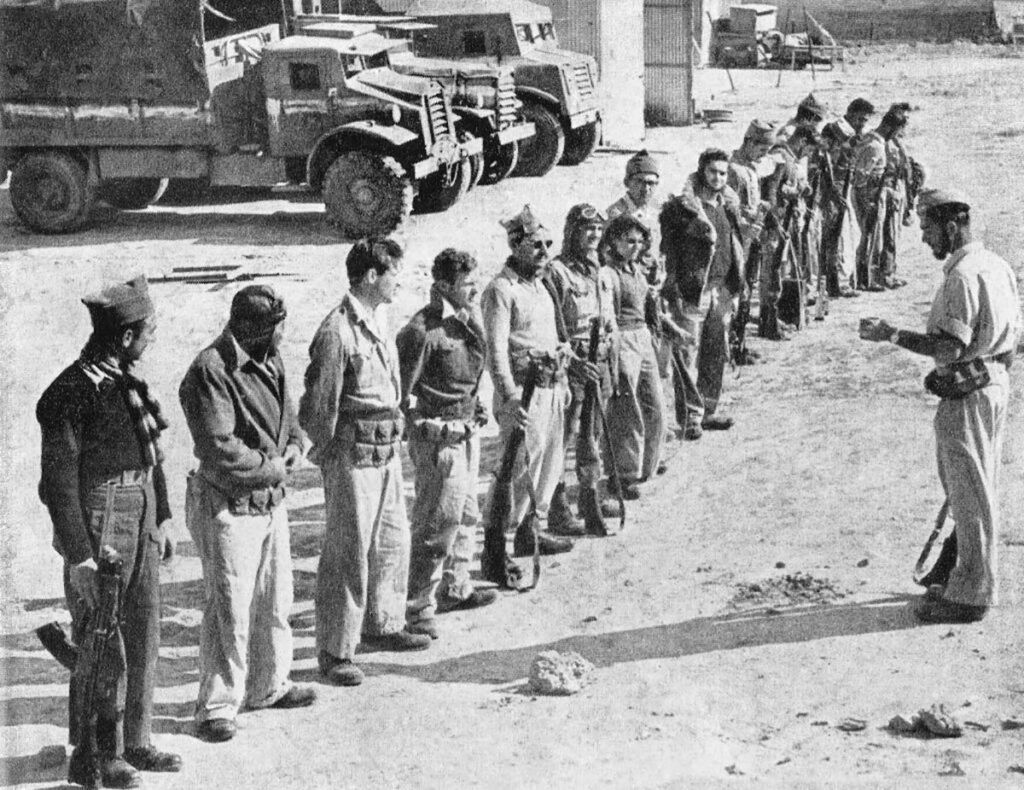
The Haganah, established in June 1920, was the largest of the Jewish paramilitaries during the British Mandate.
The group formed as a response to the British authorities’ unwillingness to defend Jews from the Arab riots of the early 1920s, and it quickly became the primary Jewish paramilitary with over 20,000 members.
During the British Mandate, the group was focused on defending Jews from Arab attacks and also helped bolster the British army during WWII. They collaborated with British intelligence and sent members on missions in the Middle East.
The Haganah was rooted in left-wing ideologies and drew most of its members from kibbutzim.
Eliyahu Golomb, an immigrant from Belarus who was one of the Haganah’s key founders, believed that forming a unified, structured fighting force would be key to the emerging state’s development.
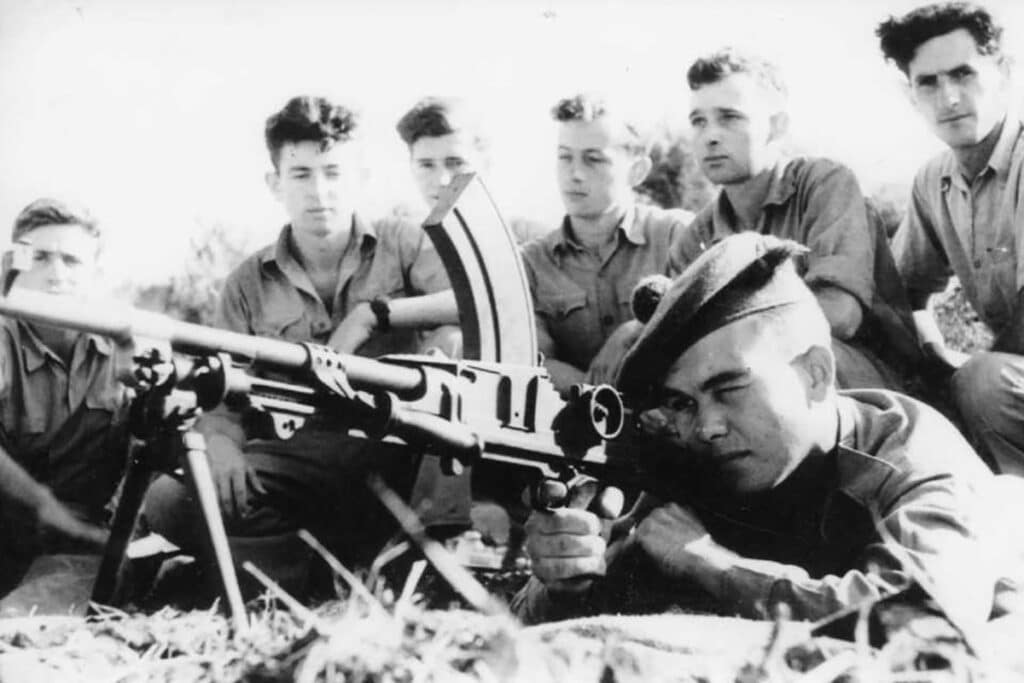
The Haganah, therefore, had a diverse range of units including a youth movement (Gadna), a dog unit, an air force, an elite faction known as the Palmach, and several others, which would later seamlessly integrate into the IDF’s structure.
Due to their more defensive stance (“Haganah” literally means “The Defense” in Hebrew), the Haganah often clashed with the Irgun and Lehi who were more aggressive and offensive in their approach.
Over time, the Haganah became much more than a military group and carried out rescue missions for Jewish refugees during the Holocaust. They also orchestrated covert operations to smuggle weapons into Israel, leveraging their robust overseas network.
They cleverly hid their training exercises by developing a martial arts system called KAPAP (Krav Panim el Panim), which later evolved into the globally known Krav Maga.
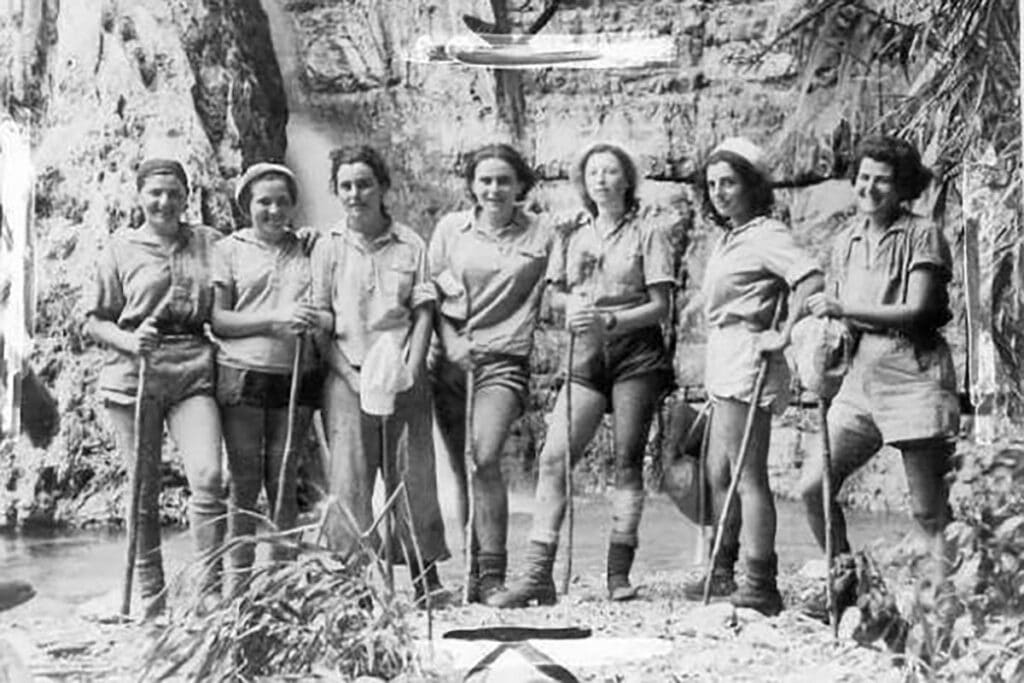
In the summer of 1947, the Haganah intensified their preparations for a large-scale war against the local Arab militias and the armies of the Arab states, as it became clear that war would break out once the British left.
On June 1, 1948, the Haganah officially became the Israeli Defense Forces led by Chief of Staff General Yaakov Dori and backed by Prime Minister David Ben-Gurion.
During their swearing-in ceremony, Ben-Gurion said that “without the experience, the planning, the operational abilities, the commanding officers, the loyalty and the courage of the Haganah, the Jewish community could not have withstood the terrible bloody battles, and we never would have seen the rise of the State of Israel. In the history of the Jewish people, the chapter of the Haganah will shine in glory and grandeur forever.”
The Irgun
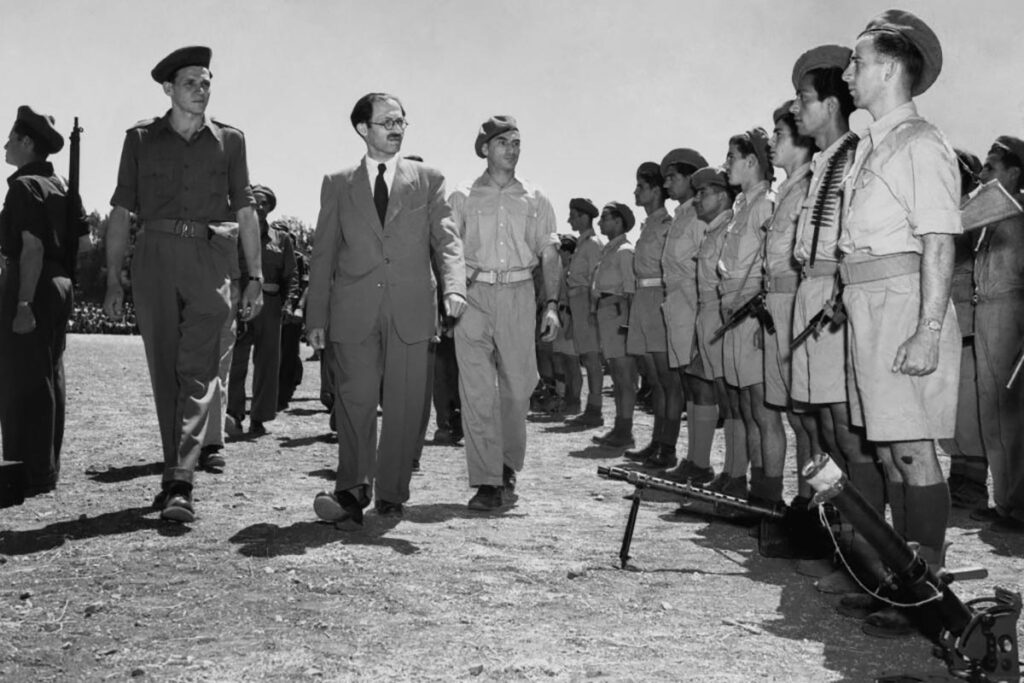
The Irgun, also known as Etzel, was formed in 1931 by disgruntled Haganah members who staunchly opposed their left-leaning policies.
They disagreed with the Haganah’s position of compromising with the British and believed an offensive rather than a purely defensive approach was necessary.
They were more right-wing in their orientation and based their ideology on Ze’ev Jabotinsky’s Revisionist Zionism and carried out attacks against the British and Arabs.
Menachem Begin, who would later serve as the prime minister of Israel, led The Irgun from 1943 to 1948. Begin was inspired by the Indian and Irish independence struggles and believed that exerting pressure on the British was the best way to wear them down.
Under his leadership, the Irgun launched several waves of attacks and officially declared war against the British Administration in February 1944.
According to British policeman Bill Smith, the Irgun gave the British authorities “the most trouble” of all the Jewish militias.
The Irgun ruthlessly blew up government, military and civilian structures that were crucial to the British, most famously bombing the King David Hotel in Jerusalem in July 1946, killing over 90 people. Their frequent attacks were often met with public criticism from the Jewish Agency and the Haganah.
The Altalena Affair
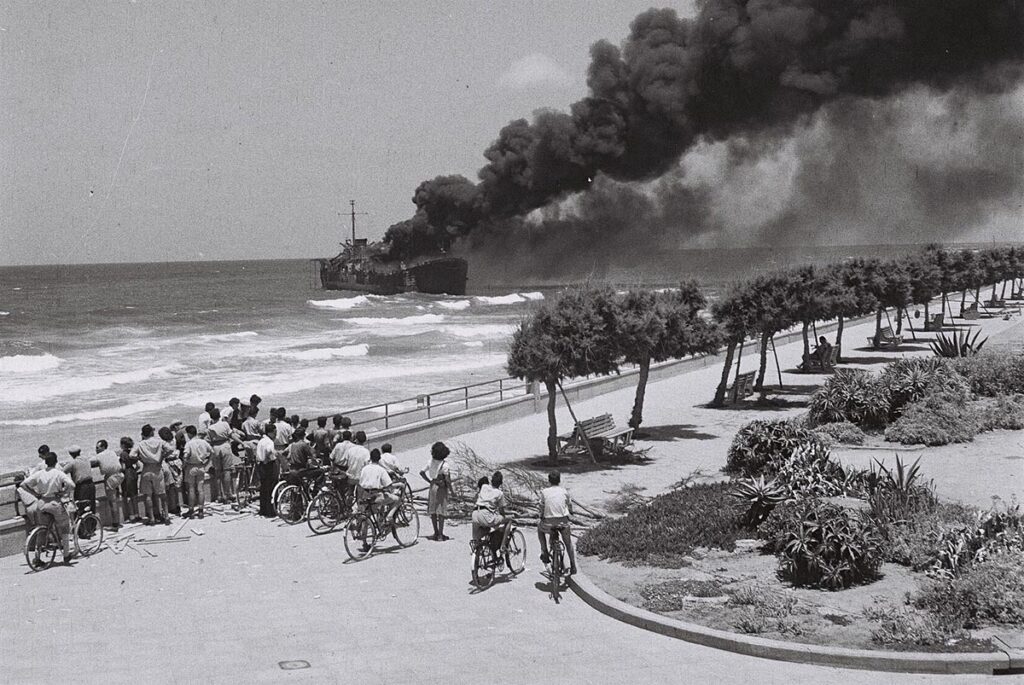
After the founding of the State, the Israeli cabinet voted to issue an ultimatum against the Irgun: either disband and join the IDF or be met with force. Although the group initially agreed, on June 20, 1948, the tension came to a head during the Altalena Affair.
The Altalena was a ship that the Irgun organized to bring weapons and fighters (many of whom were Holocaust survivors) to Israel in June 1948.
Israeli Prime Minister David Ben-Gurion, believing that the new state must have one unified army and seeing the ship filled with Irgun fighters as a threat, ordered his soldiers to fire on the ship. Begin, who was aboard the Altalena, ordered his soldiers not to fire back.
Upon its arrival, Ben Gurion ordered Chief of Staff Yigal Yadin to take the ship by force, and as a result, sixteen Irgun fighters and three IDF soldiers were killed in the confrontation. Listen to our Unpacking Israeli History episode on the tragic episode for more:
The Irgun fully integrated into the newly formed IDF in August 1948 after more than 200 Irgun prisoners, who had been arrested by the Haganah, were released from prison.
The Lehi
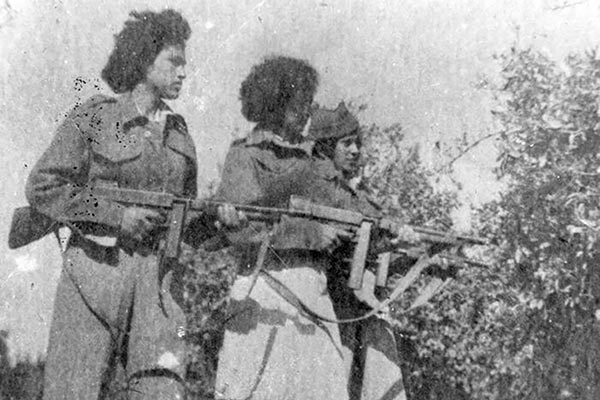
The Lehi were formed by Avraham Stern in 1940 after splitting off from the Irgun. With only 800 members, they were the smallest militia, but they made up for their small size with their penchant for mayhem.
The group trained in secret and often used improvised weapons rather than live rounds to practice. They recruited in secrecy by posting flyers at night and used the Brith Hashmonaim religious youth group as a front to find new members. This was a strategic decision to avoid drawing too much attention from British authorities.
In 1942, British forces assassinated Stern, fueling anger among the Jews in Mandatory Palestine and motivating many young people to join the movement.
Tsiona Dreimann, a former Lehi member, told Unpacked that “many youth who joined did so because we felt that they were the group that was most serious about expelling the British.”
After Stern’s death, the group was considerably weakened until Yitzhak Shamir stepped up and took over as leader.
The Lehi’s ideology could be described as “eclectic.” At one point, they supported the Soviet Union under Stalin and even proposed collaborating with the Nazis.
They asked if the Nazis would send Jews to the Mandate in exchange for assistance against their mutual enemy, the British. This controversial and bizarre proposition aimed to serve common interests, but it was strongly opposed by both the Haganah and Irgun.
The Lehi is perhaps best known for its assassination of British minister Lord Moyne, along with many other daring attacks on the British. They sometimes collaborated with the Irgun and assisted the group during the King David Hotel bombing and the battle of Deir Yassin.
Two weeks after the establishment of the State of Israel, Lehi members were absorbed into the IDF with most joining the Armored Invasion Brigade under commanding officer Yitzhak Sadeh.
However, some members continued to fight separately in Jerusalem and unsuccessfully attempted to capture the Old City from Transjordan (Israel would not gain control of the Old City until the Six-Day War in 1967).
In September 1948, remaining Lehi members were suspected of assassinating U.N. mediator Count Folke Bernadotte, leading the Israeli government to outlaw the organization’s efforts in Jerusalem.
